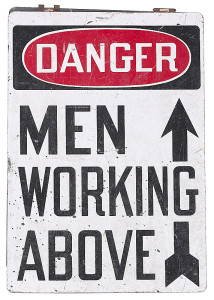No additions or expansions, but repairs and upgrades slated to cost $17m to $21M over next decade
By Mike McGann, Editor, the Times
 EAST MARLBOROUGH — The Unionville Chadds Ford School District took the first public looks at a 10-year facility plan Monday — and discussions of how to pay the approximately $17 to $21 million in improvements to the district’s six buildings over the next decade — took up a fairly large portion of the Board of Education work session.
EAST MARLBOROUGH — The Unionville Chadds Ford School District took the first public looks at a 10-year facility plan Monday — and discussions of how to pay the approximately $17 to $21 million in improvements to the district’s six buildings over the next decade — took up a fairly large portion of the Board of Education work session.
Although the lion’s share of renovations would be slated for Patton Middle School and Hillendale Elementary — the two buildings that have gone the longest without any renovations — the plan would address infrastructure repair and replacement at all six buildings during the decade.
District Director of Buildings and Grounds Rick Hostetler walked the board through the preliminary plan, which put projects into three categories: those needing near-term attention, mid-range (years 4 to 7) and long-range (years 8 to 10). Each of those were split into high priority and low priority projects.
While only minimal heating and ventilation upgrades are foreseen at Pocopson, Chadds Ford and Unionville Elementary schools — and the only expense seen for Unionville High School is replacing the Field Turf, seven to 10 years from now, roof repairs and replacements are factored in for all of the schools, as need develops.
The needs at Hillendale and Patton, according to the report prepared by MM Architects, are more significant.
Hillendale — converted from a museum in 1987 — still uses some of the original carpeting, which was cited as a short-term replacement need, as well as window replacements. A new boiler would be installed.
In addition, electrical system and lighting upgrades are needed. The plan also calls for the installation of a generator — all backup power at the building now is battery-based. The fire alarm system would also be replaced, a video surveillance system installed and the parking lots repaved in the first phase. In that first three-year period, Hillendale would receive between $1.57 and $1.63 million in repairs and upgrades.
In later years, there would be door replacement, more carpeting, new chalkboards, masonry work, and ducting work, new gym dividers and maybe science classroom upgrades, and upgrades to the school library are among the projects envisioned within the next 10 years.
At Patton, which has seen little in the way of upgrades since a 1997 addition/renovation (although the original 1973 portion of the building is little changed), the plans are more extensive, short-term and long-term. The plans call for somewhere between $4.37 and $4.87 million to be spent on the middle school over next three years, with about $2 million to follow in the next seven years. There are just under $3 million worth of optional projects — including a much more aggressive revision to the main office ($60,000 is envisioned in the basic plan, but a compete rework of the entry of the building for enhanced safety and security is expected to cost $1.5 million) and a major reworking of the school cafeteria to allow for more open space.
The short term plan would call for renovation of the main office and cafeteria and a major refresh of the auditorium, including new seating and curtains. Ceilings would be replaced, new door hardware, new lockers, and modifications to the band and choral rooms are planned. Between $2 and $2.5 million is needed to replace the heat and air conditioning units in the 1973-vintage portion of the building. Another $400,000 is needed for electrical and lighting upgrades and replacements.
While there was little discussion about the individual projects — more is likely in early 2014, when the details of the plan are further developed and reviewed — there was a discussion among board members about paying for the project.
The district’s Business and Operations Manager, Robert Cochran, outlined four options to pay for the project, including funding the work on a “pay-as-you-go” basis, a staggered bonding plan, where each phase would be borrowed individually, a bond issue for the entire project, or a scaled back plan that would only use the current capital expense and debt service reserve funds, which amount to about $4 million.
The two bonding plans seemed to have the most interest and support — although bonding the entire amount over 20 years, Cochran said, could have some impact on the district’s budget flexibility under Act 1, as it would require a more rapid increase in debt service costs.
Still, much remains tentative and speculative until the board decides which projects to fund and then how to pay for them — a process likely to pick up intensity in January, as the early drafts of the 2014-15 budget come up for discussion.






